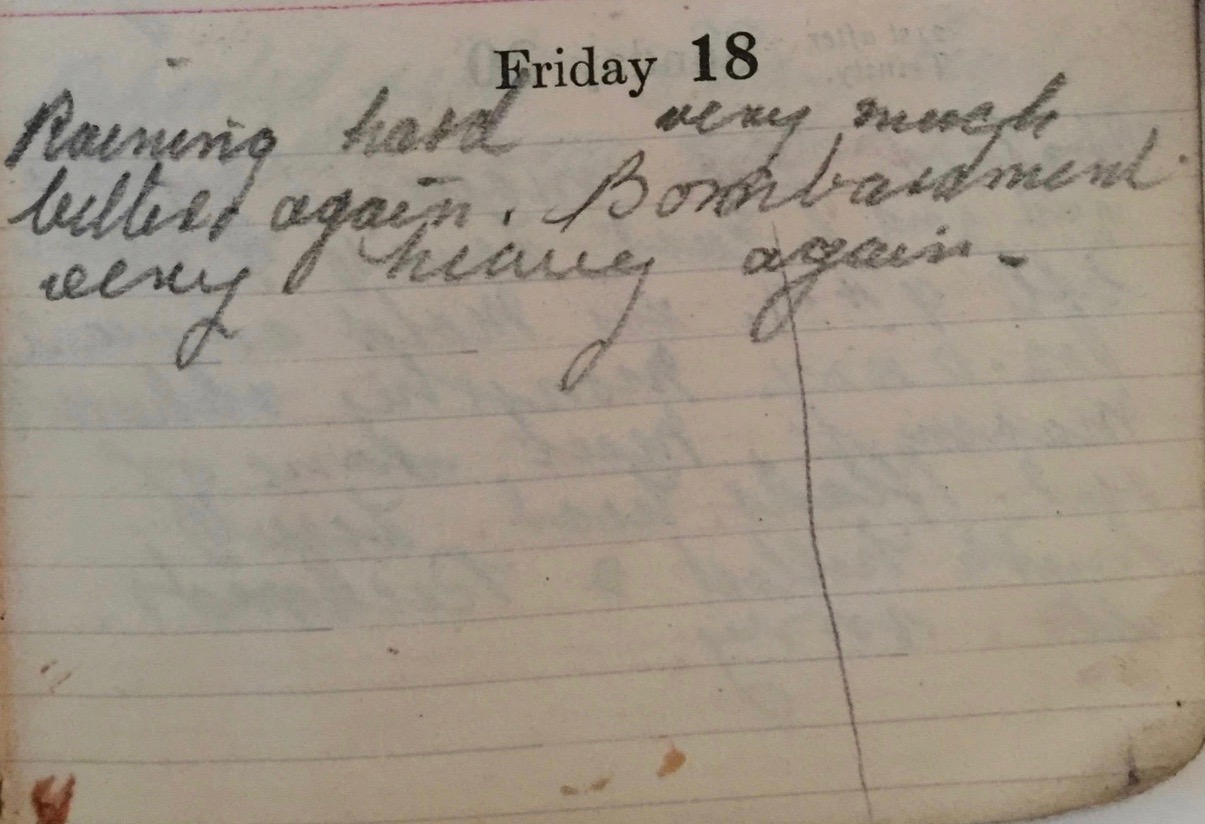Friday October 18th, 1918
Raining hard. Very much better again. Bombardment very heavy again.
Preparation for the Battle of the Selle

When the Germans had retreated from the Hindenburg Line during the Battle of Cambrai (October 8-11), they established a new defensive position to the east of the River Selle. From there their resistance stiffened.
To continue the assault, the Fourth Army, under General Rawlinson, had to find a way to cross the river and attack the German defensive positions behind it. Their main target was the area around Valenciennes. From there, the German railway centre at Aulnoye would be in artillery range.³
After the costly fighting at Cambrai and St Quentin (where the British Army suffered 140,000 casualties), some regrouping and reorganization was required. This also allowed time for supplies and heavy artillery to come up from the rear and for preparations to be made to cross the obstacles of the Selle River and its surroundings.
The photograph, taken on August 30th, 1918 around Monchy-le-Preux, shows the organization required to move the Army and keep it supplied.*
The beginning of the Battle of the Selle
After a six-day halt for preparations and artillery bombardments, the Fourth Army attacked in the early morning of October 17th. Infantry and tanks, preceded by a creeping barrage, moved forward on a 10 miles (16 km) front south of Le Cateau. Despite fierce fighting, by the end of the day the German line had been broken and Le Cateau captured. This was the opening stage of the Battle of the Selle (17–25 October). ¹‚²
Today the 9th move through Le Cateau to relieve the 6th Battalion of the Lancashire Fusiliers.
9th Battalion War Diary – 18th October 1918 – Maurois
The Battalion marched out at 02:45 hours to its former positions on high ground west of Le Cateau and remained until 20:30 hours when it moved through Le Cateau to relieve the 6th Battalion Lancashire Fusiliers in positions they had occupied the same afternoon on high ground east of Le Cateau in and around K36. 4 OR wounded, 1 OR died of wounds.
References & Further Reading
¹ 66th Division on Wikipedia
² Battle of the Selle on Wikipedia
³ Battle of the Selle 17-25 October 1918 on History of War site
* Q 80084, copyright Imperial War Museums



My great Uncle William George Sydney Holland 850 6th Army Field Artillery 17th Battery, was also gassed there on 28th Oct 1918. He died in hospital in England on 1st Nov. Cause of death listed as gas poisoning and bronchial pneumonia. From what I have read the gas damaged the lungs and fluid built up and together with infection was deadly.
My great uncle, John James Turner of the 1st Battalion of the Black Watch was wounded at the Battle of the Selle, on or about 25 October 1918 and succumbed to his “wounds” on 28 October 1918. One reference I found stated he died of pneumonia. I would have thought that fluid on the lungs might have been a consequence of a gas attack. Alternatively, did the Spanish Flu become a problem about that time and in that area?